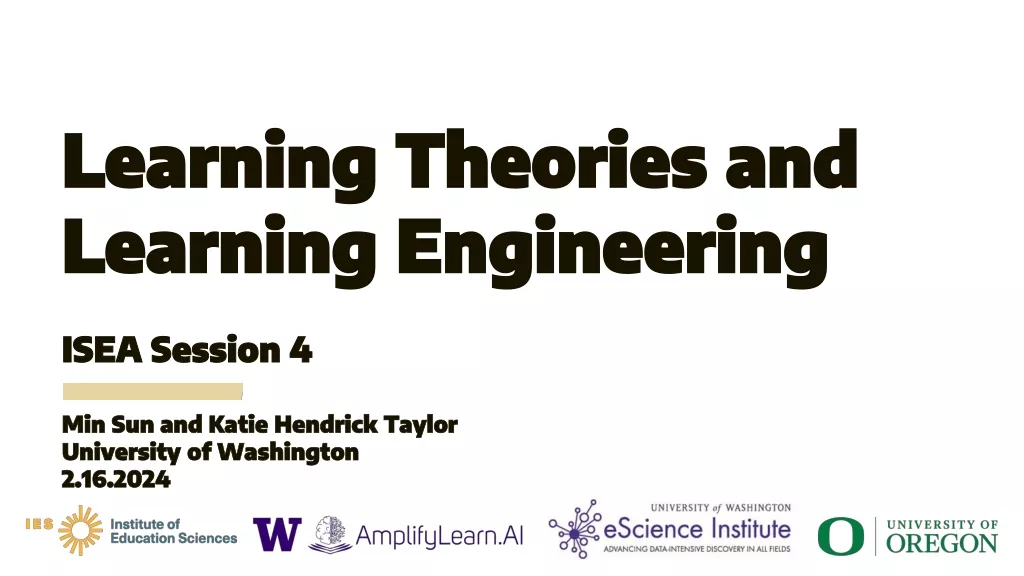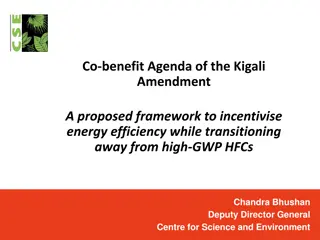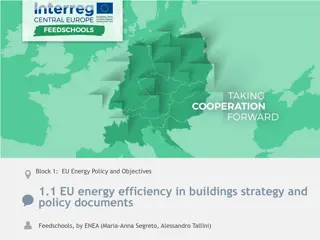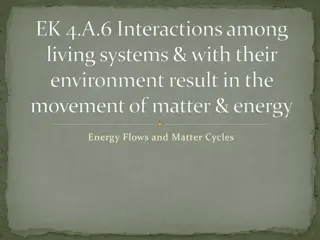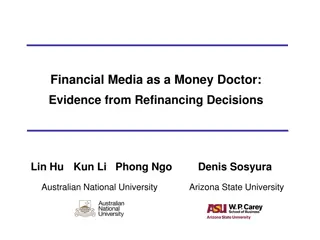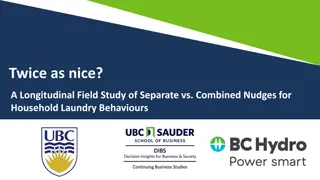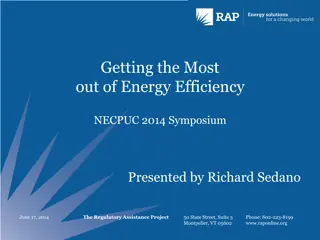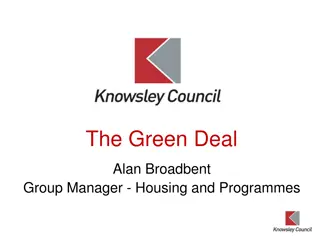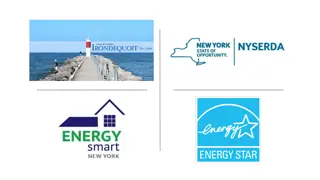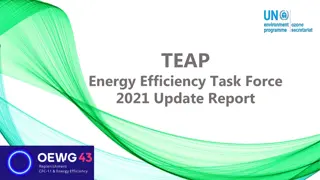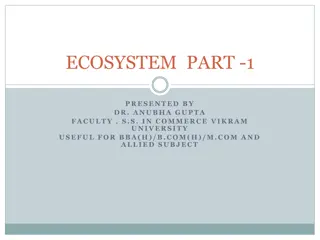Energy Efficiency Study: Nudging Consumers Towards Cost-Effective Choices
Research conducted at the Sauder School of Business, University of British Columbia, explores how energy cost framing influences consumer choices towards energy-efficient products. Partnering with BC Hydro, the study employs various strategies to highlight future costs, leading to increased adoption of energy-efficient options. Results show a significant impact on consumer decisions across different electronic appliances.
Download Presentation

Please find below an Image/Link to download the presentation.
The content on the website is provided AS IS for your information and personal use only. It may not be sold, licensed, or shared on other websites without obtaining consent from the author. Download presentation by click this link. If you encounter any issues during the download, it is possible that the publisher has removed the file from their server.
E N D
Presentation Transcript
Choosing energy efficiency David J. Hardisty Sauder School of Business University of British Columbia
Project Overview How can we nudge people towards more energy efficient products? Partnering with local utility company (BC Hydro) Many people want to minimize future costs Let s make future costs more salient Three studies of energy cost framing: 10-year cost display Energy / Dollars x Gain / Loss Continuous vs Dichotomous
People Dale Griffin Yoonji Shim Daniel Sun
Study 1 methods Price: $999.95 Estimated Electricity Use (W): 121 Standby energy consumption: 0.2w Brand: Samsung Size: 50 Resolution: 1080p Price: $749.95 Estimated Electricity Use (W): 181 Standby energy consumption: 0.4w Brand: Samsung Size: 50 Resolution: 1080p
Study 1 methods Price: $999.95 10-year estimated cost: $600 Estimated Electricity Use (W): 121 Standby energy consumption: 0.2w Brand: Samsung Size: 50 Resolution: 1080p Price: $749.95 10-year estimated cost: $1,000 Estimated Electricity Use (W): 181 Standby energy consumption: 0.4w Brand: Samsung Size: 50 Resolution: 1080p
Price: $629.99 Estimated Yearly Electricity Use (kWh): 169 Model: 4.5 Cu. Ft. 9 cycle Top Load Washer Brand: Samsung Price: $899.99 Estimated Yearly Electricity Use (kWh): 150 Model: 4.8 Cu. Ft. 13 cycle Top Load Washer Brand: Whirlpool
Price: $629.99 10-year estimated cost: $180 Estimated Yearly Electricity Use (kWh): 169 Model: 4.5 Cu. Ft. 9 cycle Top Load Washer Brand: Samsung Price: $899.99 10-year estimated cost: $100 Estimated Yearly Electricity Use (kWh): 150 Model: 4.8 Cu. Ft. 13 cycle Top Load Washer Brand: Whirlpool
Study 1 Results: Clean 1 Control 10-year cost Proportion choosing the energy 0.9 0.8 0.7 efficient option 0.6 0.5 0.4 0.3 0.2 0.1 0 TV Oven Computer Monitor Vacuum
Study 1 Results: Real 1 Control 10-year cost Proportion choosing the energy 0.9 0.8 0.7 efficient option 0.6 0.5 0.4 0.3 0.2 0.1 0 Heater Lightbulb Furnace Washing Machine
Study 1: Why? (Mediation) Not discount rates or environmental attitudes Goal matching? Goal activation? Cost under-estimation? Increased time horizon? Other ideas?
Study 2: Methods Price: $764.99 Estimated Yearly Dollar [Energy] Savings [Cost]: $27 [259 kWh] Interior Capacity: Up to 16 place settings Dishwasher Type: Full-size built-in Brand: Bosch Price: $649.99 Estimated Yearly Dollar [Energy] Savings [Cost]: $0 [279 kWh] Interior Capacity: Up to 14 place settings Dishwasher Type: Full-size built-in Brand: LG
Study 2: Results (Clean) $880 Money Energy $860 Willingness to Pay for Energy $840 Efficient Dishwasher $820 $800 $780 $760 $740 $720 $700 Cost Saved
Study 2: Results (Real) $760 Money Energy Willingness to Pay for Energy $740 Efficient Dishwasher $720 $700 $680 $660 $640 Cost Saved
Study 2: Why? (Mediation) Not discounting, environmental attitudes, or political orientation Loss aversion? Construal level theory? Goal matching/activation? Other ideas?
Study 3: Methods Price: $799.97 [Energy Star Certified: No] [Energy Usage (kWh/year): 479] Top mount refrigerator 18.2 Cu. Ft. Price: $799.97 [Energy Star Certified: Yes] [Energy Usage (kWh/year): 383] Top mount refrigerator 18.2 Cu. Ft.
Study 3: Results 1 Control Energy Star 0.9 Proportion choosing energy 0.8 0.7 efficient fridge 0.6 0.5 0.4 0.3 0.2 0.1 0 Control kWh
Study 3: Why? (Mediation) Not maximizing/satisficing Translated attributes? Goals? Other ideas?
Going forward Test with Vancouver residential sample Explore mediators Compare with & against existing methods (social norms, defaults, etc) Field studies & implementation
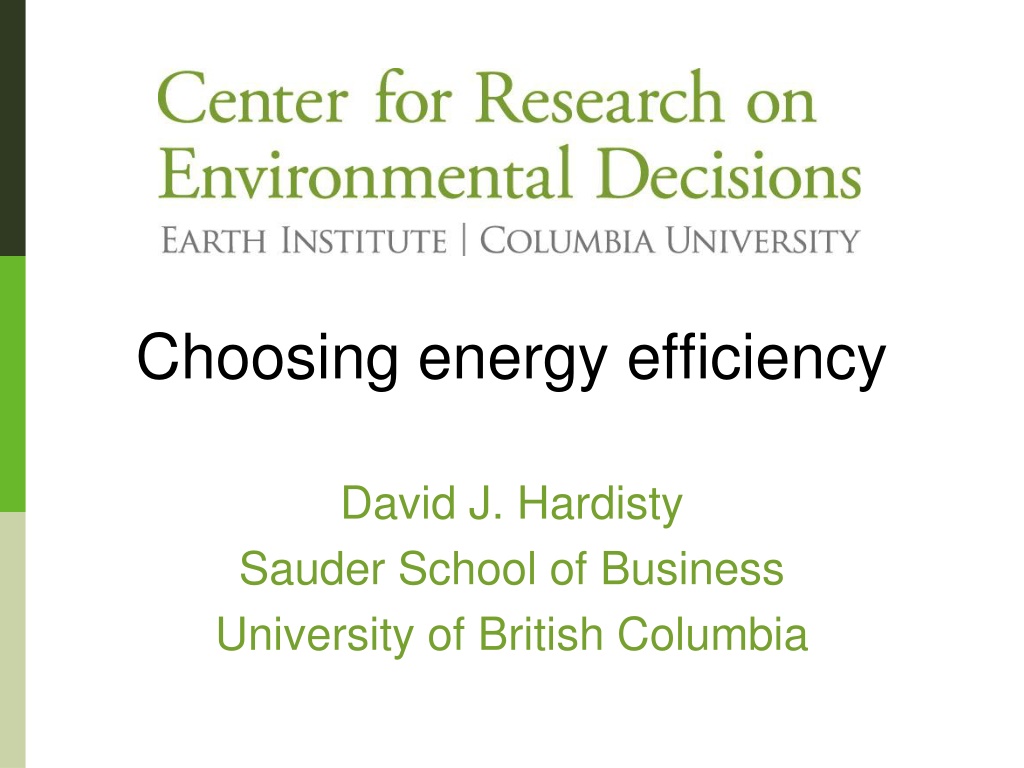
 undefined
undefined









